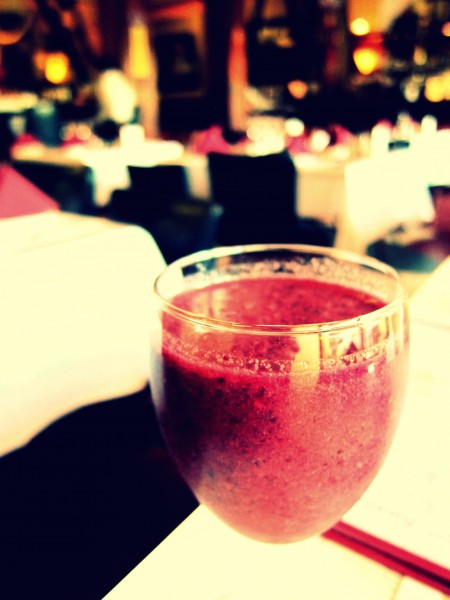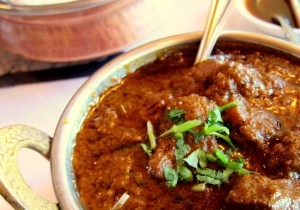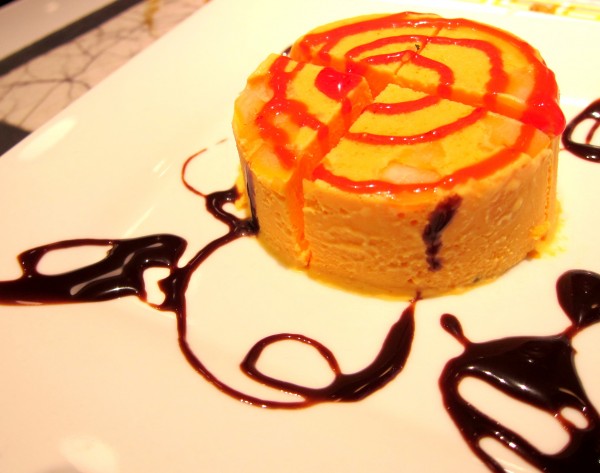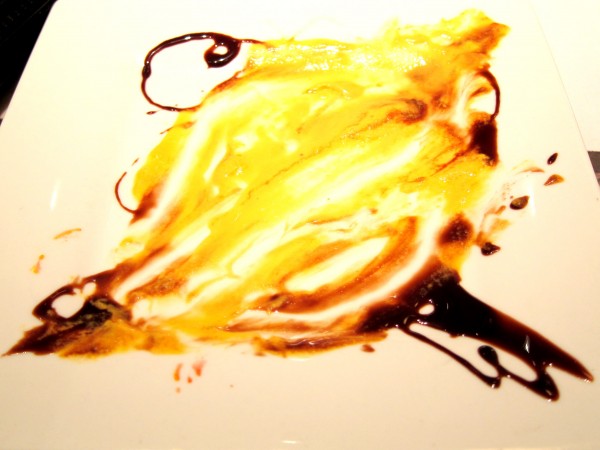
Last year I had a great meal at Himalayan Flavors, starting with a reddish purple smoothie whose ingredients I no longer remember and can’t find anywhere on their current menu, and ending with a mango dessert. The owner is Nepalese, so technically, the food is Nepalese, which is too similar to Indian for me to discern because I haven’t had much of either. A quick Google search renders over 6 million results, but the actual number of differences between Nepalese and Indian foods are few and easy enough to remember:
- Nepalese cooks use no cream/curd, so their gravies are thinner and more watery than Indian gravies.
- In Nepalese dishes, green vegetables are chopped up and stir-fried, like in Chinese cooking, except for the cumin. In Indian dishes, the green vegetables are turned into paste (like saag paneer (spinach and soft cheese), the best of which I’ve had is at Aslam’s Rasoi, but that’s a different story).
- Nepalese cooks do not use sugar to flavor the savory dishes.
Source: Binaya Manandhar

In more details:
[…] Rajesh Karmacharya, owner of Cumin restaurant (recent winner of a Michelin Bib Gourmand award), explained that Nepalese curries are generally based on tomatoes, not yogurt or coconut milk, as in India. Nepalis also use fewer and milder spices than Indians. A standard Nepalese masala (spice mixture) contains cumin, coriander, ginger, garlic, fenugreek and jimbu, an aromatic grass that resembles chives. Hotness comes from chilies or a berry called timur, similar to Szechwan pepper.
The influence of China and Tibet is apparent in the popularity of noodles, bamboo shoots, soybeans and momos — small steamed or sauteed dumplings filled with meat or vegetables. Momos became the most popular street food in Katmandu after Tibetan refugees opened stalls there in the 1960s. […]
Source: The Chicago Tribune
Indeed, what the owner suggested to us in our most recent visit were vegetable thukpa (a noodle dish with a little bit of thin broth) and aloo tama bori (sauteed potatoes and vegetables), both have bamboo shoots and tomato, neither are spicy or sweet, and neither are pasty. The lamb tarkari (a kind of curry stew described in detail as “boneless lamb pieces cooked in Himalayan Flavors special sauce herbs and spices”) is also quite mild.

But like most restaurants that I like, Himalayan Flavors scored me in because of their desserts. I knew we got something mango the first time, and its goodness never left me, so I came back. This time the presentation changed from an ice cream block with red syrup drizzled on top and chocolate syrup on the side to a shovel of yellow snow with almond shavings, but it is still mango kulfi. And I still love it. Here’s a memoir of the first mango kulfi (with chocolate):

It’s my art. Don’t you criticize. 😉
Ah, this time, I forgot to check the bar for the smoothies, I wonder if they still make only one kind each day. Just a reason for me to come back.
Address: Himalayan Flavors
1585 University Ave
Berkeley, CA 94703
(510) 704-0174



The smears tell a story of violence and give no hint to the careful construct that was once there. Only the chocolate drizzles betray some clues about the dish’s former glory. There are upright columns still, even in Carthage.
Hahaha “a story of violence” =)) I should expect nothing less from the connoisseur of the rare delicacies and forgotten recipes 😀